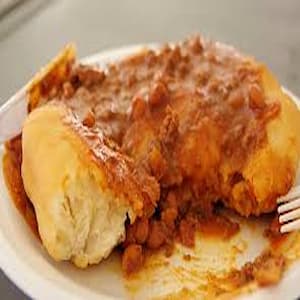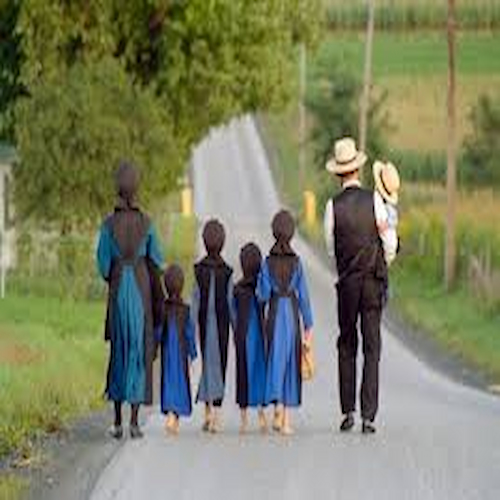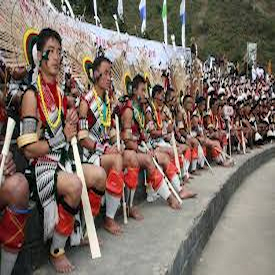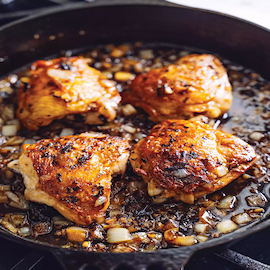The Cherokee, one of the largest Native American cultures in the United States, boasts a rich and vibrant culinary heritage that reflects its deep connection to the land and cultural traditions. Traditional Cherokee foods are not merely sustenance; they embody the history, spirituality, and communal values of the Cherokee people. From ancient agricultural practices to the foraging of wild ingredients, the ways in which the Cherokee prepare and consume food carry significant cultural importance.
Cherokee Culinary Traditions
When it comes to food, the Cherokee people have a rich tapestry of flavors, traditions, and stories woven into every meal. Their culinary practices reflect not only sustenance but also a deep connection to the land, their ancestors, and their cultural identity. Eating in Cherokee culture is much more than a means to fill the belly; it’s a communal act steeped in celebration, healing, and respect for nature. Grab a plate and let’s feast on the cultural importance of nine traditional Cherokee foods that have stood the test of time.
Cherokee Food Practices
Cherokee food practices date back centuries and are shaped by a history that includes both adaptation and resilience. Before European contact, the Cherokee thrived on a diet rich in local resources, constructing their culinary identity through a deep understanding of the land. With a diverse environment that offered everything from rivers brimming with fish to forests laden with wild game, these culinary traditions were rooted in seasonal cycles, community hunting, and foraging. Traditional methods of preparation, passed down through generations, helped forge an unbreakable bond between food and cultural identity—think of it as the original “farm-to-table” movement.
Influence of Environment on Food Choices
The Cherokee’s environment played a pivotal role in shaping their food choices. Nestled in the lush Appalachian Mountains, the Cherokee had access to an abundance of natural resources. The diverse ecosystems provided a smorgasbord of ingredients: from wild roots and berries to nuts and game. This variety not only influenced day-to-day meals but also reinforced the importance of sustainability. By relying on what the land offered, the Cherokee learned to live in harmony with nature, respecting the balance of the ecosystem while extracting what was needed for survival. No wonder they regard their food as sacred.
The Role of Agriculture in Cherokee Culture
Agriculture is like the heart of Cherokee culture, pumping life into both the community and its culinary practices. The Cherokee were skilled cultivators long before the world started talking about “locally sourced” anything. Their adaptive strategies and crops helped sustain communities and create bonds among families and neighbors.
Traditional Farming Techniques
Cherokee agriculture was a symphony of time-honored techniques, showcasing their ingenuity and respect for the land. They practiced crop rotation, intercropping, and using natural fertilizers long before those terms made their way into modern lexicons. The Three Sisters—corn, beans, and squash—played starring roles in their farming methods. These crops were not only nutritious but also mutualistic; the corn provided a natural pole for the beans to climb, while the squash spread out and kept the ground cool, creating an idyllic farming environment. It’s the original “teamwork makes the dream work” scenario.
Crops of Cultural Significance
Certain crops are more than just food in Cherokee culture; they carry stories, traditions, and identities. Among these, corn holds the crown as a sacred staple. It’s revered not only for its versatility and nourishment but also for its deep symbolism in Cherokee spirituality. Other important crops include squash and beans, both of which enrich the significance of the Three Sisters planting method. Together, these crops sustain the body and the spirit, linking generations through shared meals and cultural practices.
Key Ingredients in Traditional Cherokee Cuisine
Just like any good recipe, the magic of Cherokee cuisine lies in its key ingredients. From plants and herbs to the occasional game, each morsel tells a story that transcends generations. Let’s break down these culinary essentials that make Cherokee food so unique and beloved.
Plants and Herbs Used in Cooking
Cherokee cuisine is a celebration of the earth’s bounty, with an array of plants and herbs that not only flavor dishes but also offer healing properties. Wild leeks, ramps, and various greens often made their way into traditional meals, bringing a burst of flavor and nutrition. Additionally, the use of herbs like sage and sweetgrass is steeped in spiritual significance, often used in ceremonies and rituals. Cooking with these ingredients is like preserving ancient wisdom in the form of delicious bites—your taste buds and your soul will thank you.
Animal Sources and Their Uses
Though plants play a starring role, the Cherokee also have a deep connection to the animal kingdom. Hunters provided protein sources like deer, rabbit, and fish. They smoked, dried, or roasted the meat. People honored each animal in ceremonies, reinforcing food as a respected offering Whether it’s a hearty stew simmering over a fire or grilled fish fresh from the river, animals are a vital part of the Cherokee culinary landscape—and let’s be honest, they’re pretty tasty too.
The Significance of Corn and Its Various Preparations
As we delve deeper into the Cherokee culinary world, one ingredient steals the spotlight: corn. This humble grain is akin to the celebrity of the Cherokee table, holding not just nutritional value but profound cultural significance.
Corn as a Staple Food
Corn is the MVP of traditional Cherokee cuisine, serving as a staple that nourished generations. It’s no exaggeration to say that corn is to the Cherokee what bread is to many cultures—it’s essential! From cornbread to hominy, corn takes on various forms and flavors, always bringing comfort and sustenance. It is also a symbol of life and fertility, often featured in traditional stories and ceremonies that honor the cycles of nature and community.
Methods of Preparation and Cooking
The versatility of corn is truly impressive; it can be transformed into a multitude of dishes with a dash of creativity and tradition. Traditional methods include grinding dried corn into meal for cornbread, making hominy through a soaking and cooking process, and even creating corn mush—perfect for breakfast! Each preparation method carries its own heritage, reflecting the resourcefulness of the Cherokee people. Plus, who doesn’t love a good cornbread muffin? It’s basically a warm hug in baked form!
With these insights into traditional Cherokee foods and their cultural importance, it’s evident that every bite offers a taste of history, respect, and community. Now, who’s hungry?
Gathering and Foraging: The Role of Wild Foods
Seasonal Foraging Practices
Wild foods are the unsung heroes of Cherokee cuisine. Thanks to millennia of observation and practice, foraging is all about timing and nature’s rhythm. Cherokee communities traditionally gather foods during specific seasons when they are at their peak. Spring brings a bounty of tender greens and shoots—think wild onions and ramps—while summer is prime for berries (yum!). As autumn rolls in, nuts and roots take the spotlight. This cyclical relationship with the land nurtures both the body and the spirit, reminding us that food isn’t just sustenance; it’s a connection to the earth.
Commonly Foraged Plants and Their Uses
Foraging isn’t just a trendy hipster pastime; it’s a life skill with deep cultural roots for the Cherokee people. Commonly foraged plants like pokeweed and elderberries provide nutrition and flavor, but they also carry stories and traditions. People cook pokeweed into poke sallet, a springtime culinary tradition. They turn elderberries into syrups and jellies, valued for flavor and health. So, next time you’re out in the woods, channel your inner Cherokee and maybe don’t just collect pine cones!
Traditional Dishes: An Overview of 9 Cherokee Foods
Traditional Cherokee Foods: Succotash
A colorful mix of corn, beans, and sometimes squash, succotash is a staple that showcases the Three Sisters—three crops planted together to nourish the soil and the community. It’s the kind of dish that says, “Hey, I’m wholesome and delicious!”
Traditional Cherokee Foods: Frybread
Often described as the “Cherokee tortilla,” frybread is a golden, crispy delight that has earned its place in the hearts (and stomachs) of many. It’s often served with honey or used as a base for hearty toppings. Who knew carbs could be so comforting?
Traditional Cherokee Foods: Cornmeal Mush
Picture this: Cornmeal cooked to creamy perfection, often served with a drizzle of syrup or honey. This humble dish represents the adaptability of Cherokee cooking—simple yet satisfying, like that friend who always brings snacks to the party.
Traditional Cherokee Foods: Venison Stew
With a rich and hearty flavor, venison stew is a nod to the Cherokee’s hunting traditions. It often features root vegetables and is seasoned to perfection, providing warmth on cold nights. It’s the ultimate comfort food, like a big bear hug in a bowl.
Traditional Cherokee Foods: Wild Greens Salad
Foraging doesn’t stop at cooking; it extends to fresh salads made of wild greens like dandelion and chickweed. Toss them with a bit of vinegar, and you have a nutritious side that’s as wild as your taste buds can handle!
Traditional Cherokee Foods: Acorn Soup
Who knew acorns could taste so good? Ground into meal or flour, acorns are transformed into a flavorful soup that celebrates resourcefulness. It’s the culinary equivalent of turning lemons into lemonade—if lemonade also contained lots of fiber.
Traditional Cherokee Foods: Bear Meat Stew
For those feeling particularly adventurous, bear meat stew is a traditional dish that showcases the indigenous connection to the land. This stew combines unique flavors and serves as a reminder of the sacred relationship with nature.
Traditional Cherokee Foods: Maple Syrup Pie
A sweet treat that’s perfect for those with a sweet tooth, this pie is made with rich maple syrup and has a deliciously gooey center. It’s a dessert that literally drips with cultural significance, exemplifying Cherokee ingenuity.
Traditional Cherokee Foods: Cherokee Pumpkin Bread
With the warmth of spices and the sweetness of pumpkin, this bread is a seasonal favorite. It reflects the Cherokee’s connection to the changing seasons and the bounty they harvest from their land—proof that nature really knows how to throw a flavorful party.
Cultural Significance of Food in Cherokee Ceremonies
Food in Rituals and Celebrations
Food isn’t just about filling bellies for the Cherokee; it’s deeply woven into the fabric of their cultural and spiritual life. During ceremonies, specific dishes are prepared to honor ancestors and celebrate life events. The act of sharing these meals fosters community and strengthens ties. It’s not a meal unless it’s accompanied by laughter, stories, and perhaps a bit of friendly debate over who made the best frybread.
Symbolism of Specific Dishes
Certain foods carry profound meanings in Cherokee culture—think of them as culinary charms. For example, corn symbolizes life and sustenance, while berries represent the bounty of the earth. These dishes aren’t just tasty treats; they’re vessels of history and identity that connect generations through shared flavors and traditions.
Conclusion: Preserving Cherokee Culinary Heritage
Challenges Facing Traditional Food Practices
As with many indigenous cuisines, the Cherokee food tradition faces challenges like modernization and loss of land. Access to traditional ingredients is dwindling, and young people are often drawn to fast food over home cooking. It’s a bit like trying to keep your favorite childhood toy in pristine condition while living in a family of tornadoes.
Efforts to Revitalize Cherokee Cuisine
However, hope is on the horizon! Many Cherokee chefs and community members are passionately working to revive traditional ingredients and recipes. They’re not just cooking; they’re reclaiming identity and heritage, empowering new generations to appreciate and embrace their culinary roots. With workshops, cooking classes, and even local farmers’ markets dedicated to enriching the Cherokee culinary landscape, traditional foods are making a delicious comeback!
So, whether you’re diving into a plate of frybread or sipping on acorn soup, remember that you’re not just enjoying a meal; you’re partaking in a rich tapestry of culture, history, and community. And who wouldn’t want in on that?
In conclusion, traditional Cherokee foods are a vital part of the people’s cultural identity, serving as a link to their past and a foundation for the future. Through the preparation and sharing of these dishes, Cherokee people honor their heritage and strengthen their community ties. As efforts to revitalize and preserve these culinary traditions continue, the significance of these foods remains clear: they are not only a source of nourishment but also a testament to the resilience and spirit of the Cherokee Nation. By embracing and sharing their culinary practices, the Cherokee ensure that their rich heritage endures for generations to come.
Frequently Asked Questions
What are some common ingredients used in traditional Cherokee cuisine?
Traditional Cherokee cuisine often features key ingredients such as corn, beans, squash, wild game, and various foraged plants and herbs. These ingredients reflect the people’s agricultural practices and their close relationship with the natural environment.
How do traditional Cherokee foods differ from contemporary Native American cuisine?
Modernization and cultural exchange have broadened Native American cuisine, but Cherokee foods remain rooted in historical practices and local resources. Traditional dishes emphasize seasonal ingredients and methods passed down through generations.
Are there any traditional Cherokee foods that are still commonly prepared today?
Yes, many traditional Cherokee foods, such as cornbread, bean dishes, and various wild game preparations, are still enjoyed today. Community events and gatherings often feature these foods, helping to keep the culinary traditions alive for future generations.
How can people learn more about Cherokee culinary traditions?
People interested in learning more about Cherokee culinary traditions can explore resources such as cookbooks focused on Native American cuisine, attend cultural events and workshops hosted by tribal organizations, or connect with members of the Cherokee Nation who are passionate about preserving their food heritage.



